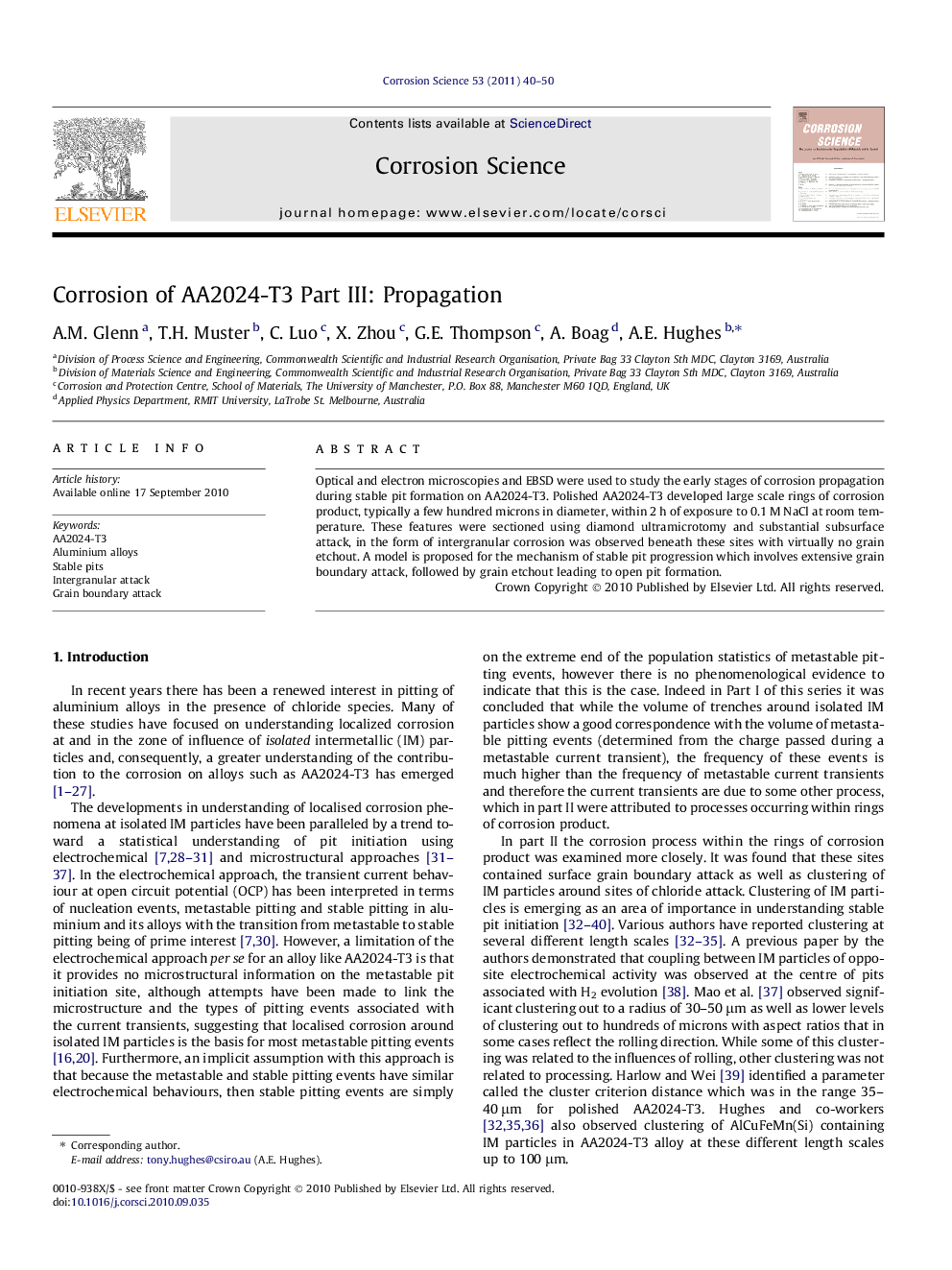| Article ID | Journal | Published Year | Pages | File Type |
|---|---|---|---|---|
| 1469808 | Corrosion Science | 2011 | 11 Pages |
Optical and electron microscopies and EBSD were used to study the early stages of corrosion propagation during stable pit formation on AA2024-T3. Polished AA2024-T3 developed large scale rings of corrosion product, typically a few hundred microns in diameter, within 2 h of exposure to 0.1 M NaCl at room temperature. These features were sectioned using diamond ultramicrotomy and substantial subsurface attack, in the form of intergranular corrosion was observed beneath these sites with virtually no grain etchout. A model is proposed for the mechanism of stable pit progression which involves extensive grain boundary attack, followed by grain etchout leading to open pit formation.
Research highlights► Corrosion of AA2024 in 0.1 M NaCl was examined for immersion times up to 120 min. ► Rings of corrosion product with H2 evolution developed after 5 min immersion. ► Intergranular attack penetrated up to 60 μm below the rings within 120 min. ► After 240 min mixed intergranular attack and grain etchout were observed.
